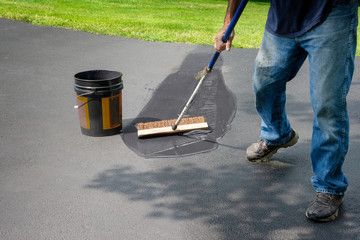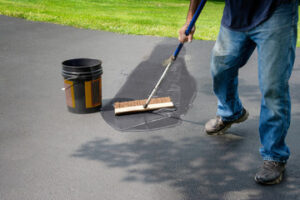Masonry stands as one of the oldest and most enduring construction techniques known to humanity, spanning thousands of years of architectural history. From the ancient wonders of the world to modern skyscrapers, masonry has played a central role in shaping the built environment. This essay explores the art, science, and significance of masonry, tracing its historical roots, examining its contemporary applications, and envisioning its future in architecture and construction. For more information, click the link http://summitpavers.com to proceed.
Historical Evolution:
:max_bytes(150000):strip_icc()/Layingbrick-GettyImages-514032051-c966ac49469843e285d27c7b7f90dcaa.jpg)
The origins of masonry can be traced back to prehistoric times when early humans first began to stack stones to create simple shelters and defensive structures. As civilizations flourished, so too did the art of masonry, with ancient cultures such as the Egyptians, Greeks, and Romans pioneering advanced techniques in stonecutting, bricklaying, and mortar mixing.
The Egyptians, renowned for their monumental architecture, mastered the art of quarrying and shaping massive stone blocks to build structures such as the Great Pyramid of Giza. The Greeks, meanwhile, developed the classical orders of architecture and perfected the art of ashlar masonry, using precisely cut and polished stones to create elegant temples and civic buildings. The Romans further refined these techniques, introducing innovations such as the use of concrete and arch construction to create vast public works such as aqueducts, amphitheaters, and bridges.
During the Middle Ages, masonry reached new heights of sophistication with the construction of Gothic cathedrals and medieval castles across Europe. Skilled stonemasons, organized into guilds, erected towering structures adorned with intricate carvings, ribbed vaults, and flying buttresses. These masterpieces of medieval masonry remain enduring symbols of human creativity and craftsmanship.
Contemporary Practices:
While the tools and techniques of masonry have evolved over the centuries, the core principles remain the same. Modern masons continue to work with natural materials such as stone, brick, and mortar to create durable and aesthetically pleasing structures.
One of the most common materials used in modern masonry is brick. Fired clay bricks are versatile, durable, and relatively easy to work with, making them a popular choice for a wide range of applications. Modern bricklaying techniques, such as stretcher bond and Flemish bond, allow masons to create intricate patterns and designs that add visual interest to buildings.
Stone masonry remains another hallmark of quality craftsmanship. Skilled stonemasons use traditional techniques such as quarrying, cutting, and dressing to shape natural stone into blocks, slabs, and architectural elements. Whether building a retaining wall, a fireplace surround, or a grand entranceway, stone masons take pride in their ability to work with this timeless material.
Advancements in technology have also had a significant impact on the field of masonry. Power tools such as diamond-tipped saws and pneumatic hammers have made cutting and shaping stone and brick faster and more precise than ever before. Additionally, modern mortar mixes, fortified with additives such as lime and polymers, offer improved strength, durability, and workability compared to traditional lime-based mortars.
Applications in Architecture:
Masonry remains a staple of contemporary architecture, valued for its durability, versatility, and aesthetic appeal. In residential construction, masonry is often used to create exterior facades, interior walls, and fireplaces. Brick and stone veneers can give a home a timeless, elegant look, while concrete block construction offers strength and durability in high-wind or seismic regions.
In commercial and institutional settings, masonry is prized for its ability to create imposing, monumental structures that stand the test of time. From office buildings and shopping centers to schools and government buildings, masonry lends a sense of permanence and prestige to the built environment. Additionally, masonry’s fire-resistant properties make it an ideal choice for structures where safety is a primary concern.
Masonry also plays a vital role in landscape architecture, where it is used to create retaining walls, terraces, and other hardscape features. Whether constructing a garden wall or a grand staircase, masons draw on their knowledge of materials and techniques to create structures that blend seamlessly with the natural surroundings.
Challenges and Opportunities:
Despite its enduring appeal, masonry faces challenges in the modern construction industry. The rising cost of materials and labor, coupled with increasing competition from alternative building methods such as steel and concrete, has led some to question the future viability of masonry.
However, masonry also presents opportunities for innovation and adaptation. Advances in materials science, such as the development of engineered stone and sustainable brick alternatives, offer new possibilities for masons to explore. Likewise, the growing interest in green building practices and historic preservation has created demand for skilled masons who can work with traditional materials and techniques.
Conclusion:
In conclusion, masonry is a timeless craft that has stood the test of time. From its humble beginnings in ancient civilizations to its modern-day applications in architecture and construction, masonry continues to shape the world around us. While the tools and techniques may have evolved, the core principles of craftsmanship, durability, and beauty remain unchanged. As we look to the future, masonry will undoubtedly continue to play a vital role in building the cities, towns, and structures of tomorrow.
Masonry structures must be designed and constructed to withstand various loads, including gravity, wind, seismic forces, and temperature fluctuations. Masonry walls can be load-bearing, supporting the weight of the structure above them, or non-load-bearing, serving as partitions or veneers. Load-bearing walls are typically thicker and require a solid foundation to distribute the weight evenly and prevent settlement. Reinforced masonry walls incorporate steel reinforcement bars or mesh to enhance structural strength and resistance to lateral forces.
In addition to structural considerations, masonry must also address issues such as moisture infiltration, thermal insulation, and fire resistance. Proper detailing and waterproofing techniques help prevent water penetration and protect masonry walls from deterioration over time. Insulating materials, such as foam boards or cavity walls filled with insulation, improve energy efficiency and occupant comfort. Fire-rated masonry assemblies, constructed using fire-resistant materials and mortar, provide passive fire protection in buildings, delaying the spread of flames and smoke in the event of a fire.
Aesthetic Expression:
Masonry offers endless possibilities for artistic expression, with artisans showcasing their creativity through intricate patterns, textures, and detailing. Stone carving, bricklaying, and mortar jointing techniques allow masons to create visually stunning facades, walls, and architectural features. Decorative elements such as arches, columns, cornices, and corbels add character and charm to buildings, reflecting the cultural and historical context of their surroundings. Modern masonry innovations, such as thin brick veneers and stamped concrete, offer cost-effective alternatives to traditional craftsmanship while still achieving desired aesthetic effects.
Applications and Advancements:
Masonry finds applications in a wide range of construction projects, from residential homes and commercial buildings to bridges, retaining walls, and monuments. Advancements in masonry technology have led to the development of new materials, such as autoclaved aerated concrete (AAC) blocks and engineered stone veneers, which offer enhanced durability, sustainability, and design flexibility. Digital tools and software, such as Building Information Modeling (BIM) and computer-aided design (CAD), enable architects and engineers to visualize, analyze, and optimize masonry structures with greater precision and efficiency.
Masonry represents the timeless marriage of art and science in the construction industry. From its ancient origins to modern applications, masonry continues to shape the built environment with its enduring beauty, structural integrity, and versatility. As technology and materials evolve, masonry remains a cornerstone of architectural expression, providing a solid foundation for the buildings of today and tomorrow.
Masonry, the art and craft of building structures from individual units such as stone, brick, or concrete, stands as a testament to human ingenuity and craftsmanship. From ancient civilizations to modern architecture, masonry has played a pivotal role in shaping the built environment. This essay delves into the rich history, enduring techniques, and contemporary applications of masonry, highlighting its significance as a foundational element of civilization.
Historical Evolution:
The origins of masonry can be traced back to the dawn of civilization, with evidence of stone structures dating back thousands of years. Ancient civilizations such as the Egyptians, Mesopotamians, Greeks, and Romans pioneered the techniques of quarrying, cutting, and stacking stone to create monumental structures such as pyramids, temples, aqueducts, and coliseums. These early masons developed sophisticated methods for shaping and fitting stones together, laying the groundwork for the evolution of masonry as a craft.
During the Middle Ages, masonry flourished as Gothic cathedrals and medieval castles rose to prominence across Europe. Skilled artisans known as stonemasons employed intricate carving, vaulting, and tracery techniques to create elaborate architectural masterpieces that still awe and inspire to this day. The Renaissance period witnessed a revival of classical masonry traditions, with architects and builders incorporating elements of Greek and Roman architecture into their designs.
In the modern era, masonry continued to evolve with advancements in materials, technology, and construction methods. The Industrial Revolution brought innovations such as fired clay bricks, Portland cement, and reinforced concrete, revolutionizing the field of construction and expanding the possibilities of masonry.


